Partner
Mary Berry
Queer Places:
18 Dunraven St, Mayfair, London W1K 7FE, UK
18 Sackville St, Mayfair, London, UK
8 Grosvenor Square, Mayfair, London W1K 4AG, UK
Strawberry Hill House, 268 Waldegrave Rd, Twickenham TW1 4ST, UK
27 Upper Brook St, Mayfair, London W1K 7QF, Regno Unito
York House,
Twickenham TW1 3NH, UK
St Mary, Sundridge, Sevenoaks TN14, Regno Unito
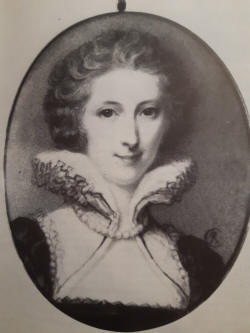 Anne
Seymour Damer, née Conway, (8 November 1748 – 28 May 1828) was an
English sculptor. Anne Seymour Damer
was the subject of a number of political satires in the XVIII century.
The renowned sculptor Anne
Seymour Damer was passionately in love with
Mary Berry,
who lived with her sister in Twickenham. Mary never allowed Anne’s
advances to stray beyond the preliminaries and kept her suitor at arm’s
length, as a friend only. Anne turned her attentions to actress
Elizabeth Farren,
the future Countess of Derby, and their affair was lampooned in
satirical street pamphlets, with ribald speculation that Anne did a lot
more for Elizabeth sexually than her husband ever could. After her husband's death, she developed a close friendship with Mary Berry
and her home in Strawberry Hill became associated with a sapphic set
including the actresses Kitty
Clive and
Elizabeth Farren.
One satire, entitles A Sapphic Epistle, by Jack Cavendish, referred to a
Mrs D...r and claimed: Strawberry Hill at once doth prove, Taste,
elegange, and Sapphic love, In gentle Kitty. Another referred to
Elizabeth Farren before her marriage to Lord Derby, observing: superior
to the influence of MEN, she is supposed to feel more exquisite delight
from the touch of the cheek of Mrs D...r, than the fancy of any
novelties which the wedding night can promise with such a partner as his
lordship.
Anne
Seymour Damer, née Conway, (8 November 1748 – 28 May 1828) was an
English sculptor. Anne Seymour Damer
was the subject of a number of political satires in the XVIII century.
The renowned sculptor Anne
Seymour Damer was passionately in love with
Mary Berry,
who lived with her sister in Twickenham. Mary never allowed Anne’s
advances to stray beyond the preliminaries and kept her suitor at arm’s
length, as a friend only. Anne turned her attentions to actress
Elizabeth Farren,
the future Countess of Derby, and their affair was lampooned in
satirical street pamphlets, with ribald speculation that Anne did a lot
more for Elizabeth sexually than her husband ever could. After her husband's death, she developed a close friendship with Mary Berry
and her home in Strawberry Hill became associated with a sapphic set
including the actresses Kitty
Clive and
Elizabeth Farren.
One satire, entitles A Sapphic Epistle, by Jack Cavendish, referred to a
Mrs D...r and claimed: Strawberry Hill at once doth prove, Taste,
elegange, and Sapphic love, In gentle Kitty. Another referred to
Elizabeth Farren before her marriage to Lord Derby, observing: superior
to the influence of MEN, she is supposed to feel more exquisite delight
from the touch of the cheek of Mrs D...r, than the fancy of any
novelties which the wedding night can promise with such a partner as his
lordship.
Anne Conway was born in Sevenoaks into an aristocratic Whig family; she was
the only daughter of Field-Marshal
Henry Seymour Conway and his
wife Caroline Bruce, born Campbell, Lady Ailesbury (1721–1803), and was
brought up at the family home at Park Place, Remenham, Berkshire.
In 1767 she married John Damer, the son of Lord Milton, later the 1st Earl
of Dorchester. The couple received an income of £5,000 from Lord Milton, and
were left large fortunes by Milton and Henry Conway.[1]
They separated after seven years, and he committed suicide in 1776, leaving
considerable debts. Her artistic career developed during her widowhood.
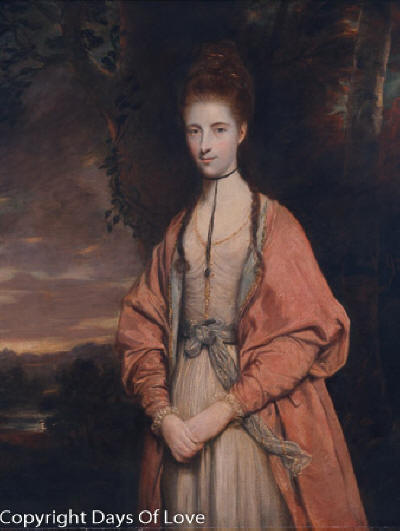

Anne Seymour Damer, née Conway (copy after an original of 1772–1773)
Joshua Reynolds (1723–1792) (copy after)
National Portrait Gallery, London
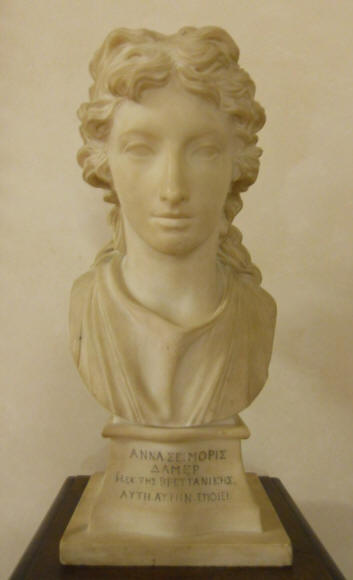
Self Portrait
marble (?) by Anne Seymour Damer (1748–1828). Uffizi Gallery, Florence
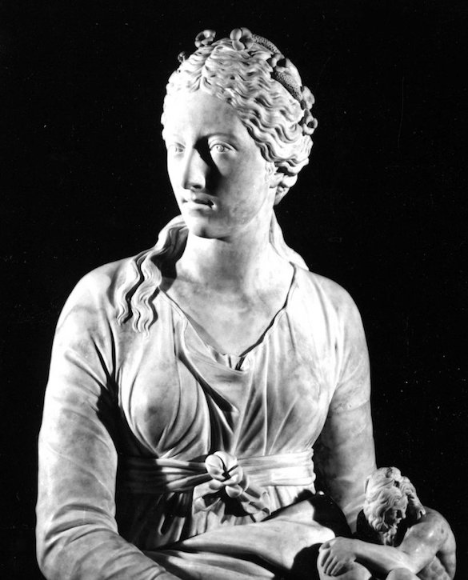
Anne Seymour Damer (1749–1828), as the Muse of Sculpture
(detail), 1778, marble by Giuseppe Ceracchi (1751–1801)
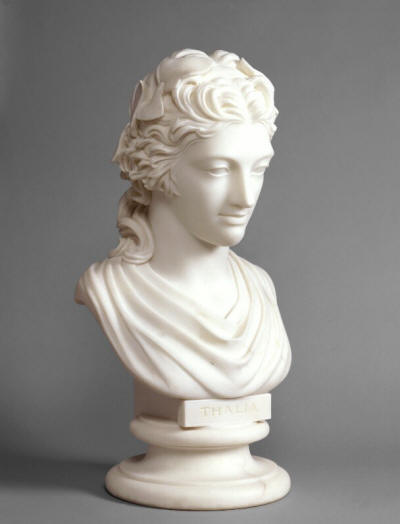
Elizabeth, née Farren (1759–1829), Countess of Derby c.1788
Anne Seymour Damer (1748–1828)
National Portrait Gallery, London
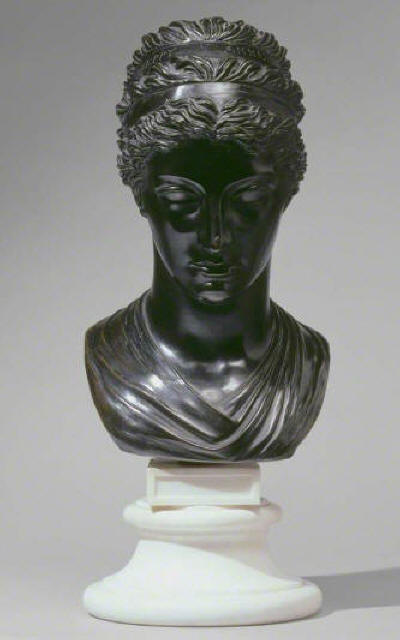
Mary Berry (1763–1852) (based on a work from c.1793)
Anne Seymour Damer (1748–1828)
National Portrait Gallery, London
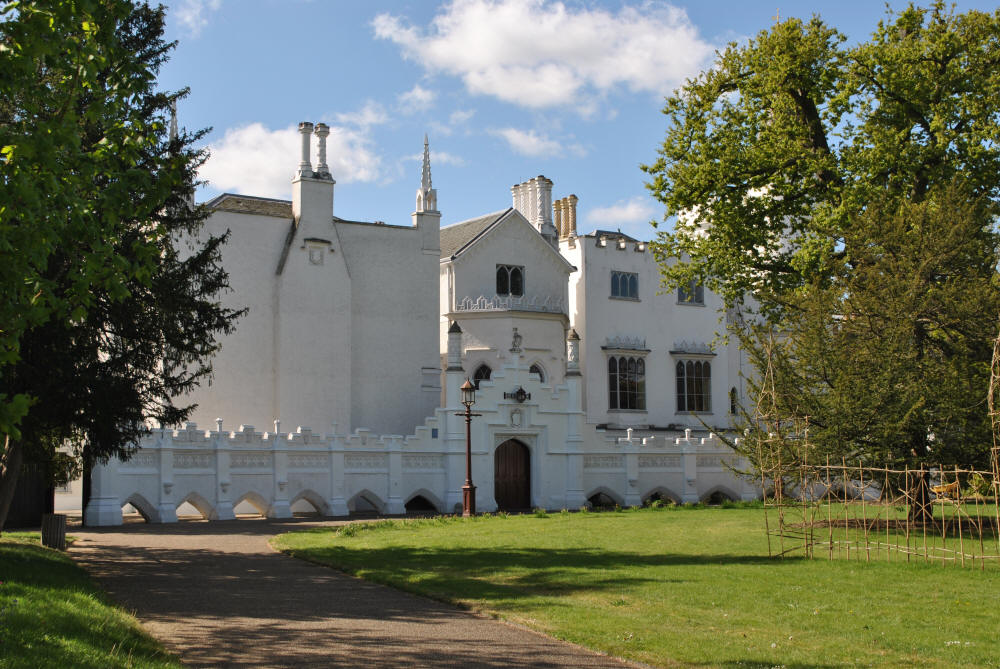
Strawberry Hill
Anne was a frequent visitor to Europe. During one voyage she was captured
by a privateer, but released unharmed in Jersey. She visited
Sir Horace Mann in Florence, and Sir William Hamilton in Naples, where she
was introduced to Lord Nelson. In 1802, while the Treaty of Amiens was in
effect, she visited Paris with the author
Mary Berry
and was granted an audience with Napoleon.
From 1818, Anne Damer lived at York House, Twickenham. She died, aged 79,
in 1828 at her London house, No. 27 Upper Brook Street, Grosvenor Square.[2]
She was buried in the church at Sundridge, Kent, along with her sculptor's
tools and apron and the ashes of her favourite dog.
Damer's friends included a number of influential Whigs and aristocrats. Her
guardian and friend Horace Walpole was a
significant figure, who helped foster her career and on his death left her his
London villa, Strawberry Hill. She also moved in literary and theatrical
circles, where her friends included the poet and dramatist Joanna Baillie, the
author Mary Berry, and the actors Sarah Siddons and
Elizabeth Farren.
She frequently took part in masques at the Pantheon and amateur theatricals at
the London residence of the Duke of Richmond, who was married to her
half-sister.[6]
A number of sources have named Damer as being involved in lesbian
relationships, particularly relating to her close friendship with Mary Berry,
to whom she had been introduced by Walpole in 1789, and with whom she lived
together in her later years. Even during her marriage, her likings for male
clothing and demonstrative friendships with other women were publicly noted
and satirised by hostile commentators such as Hester Thrale[7]
and in the anonymous pamphlet A Sapphick Epistle from Jack Cavendish to the
Honourable and most Beautiful, Mrs D— (c.1770).[8][9]
A romance between Damer and Elizabeth Farren, who was mentioned by Thrale,
is the central storyline in the 2004 novel Life Mask by Emma Donoghue.[10]
My published books:


BACK TO HOME PAGE

- https://en.wikipedia.org/wiki/Anne_Seymour_Damer
- A Lesbian History of Britain: Love and Sex Between Women Since 1500,
Rebecca Jennings, Greenwood World Pub., 2007
- Rossini, Gill. Same Sex Love 1700-1957: A History and Research Guide .
Pen and Sword. Edizione del Kindle.
- Homosexuals in History, A Study of Ambivalence in Society, Literature
and the Arts, by A.L. Rowse, 1977
- Rupp, Leila J.. Sapphistries (Intersections) (p.115). NYU Press.
Edizione del Kindle.
 Anne
Seymour Damer, née Conway, (8 November 1748 – 28 May 1828) was an
English sculptor. Anne Seymour Damer
was the subject of a number of political satires in the XVIII century.
The renowned sculptor Anne
Seymour Damer was passionately in love with
Mary Berry,
who lived with her sister in Twickenham. Mary never allowed Anne’s
advances to stray beyond the preliminaries and kept her suitor at arm’s
length, as a friend only. Anne turned her attentions to actress
Elizabeth Farren,
the future Countess of Derby, and their affair was lampooned in
satirical street pamphlets, with ribald speculation that Anne did a lot
more for Elizabeth sexually than her husband ever could. After her husband's death, she developed a close friendship with Mary Berry
and her home in Strawberry Hill became associated with a sapphic set
including the actresses Kitty
Clive and
Elizabeth Farren.
One satire, entitles A Sapphic Epistle, by Jack Cavendish, referred to a
Mrs D...r and claimed: Strawberry Hill at once doth prove, Taste,
elegange, and Sapphic love, In gentle Kitty. Another referred to
Elizabeth Farren before her marriage to Lord Derby, observing: superior
to the influence of MEN, she is supposed to feel more exquisite delight
from the touch of the cheek of Mrs D...r, than the fancy of any
novelties which the wedding night can promise with such a partner as his
lordship.
Anne
Seymour Damer, née Conway, (8 November 1748 – 28 May 1828) was an
English sculptor. Anne Seymour Damer
was the subject of a number of political satires in the XVIII century.
The renowned sculptor Anne
Seymour Damer was passionately in love with
Mary Berry,
who lived with her sister in Twickenham. Mary never allowed Anne’s
advances to stray beyond the preliminaries and kept her suitor at arm’s
length, as a friend only. Anne turned her attentions to actress
Elizabeth Farren,
the future Countess of Derby, and their affair was lampooned in
satirical street pamphlets, with ribald speculation that Anne did a lot
more for Elizabeth sexually than her husband ever could. After her husband's death, she developed a close friendship with Mary Berry
and her home in Strawberry Hill became associated with a sapphic set
including the actresses Kitty
Clive and
Elizabeth Farren.
One satire, entitles A Sapphic Epistle, by Jack Cavendish, referred to a
Mrs D...r and claimed: Strawberry Hill at once doth prove, Taste,
elegange, and Sapphic love, In gentle Kitty. Another referred to
Elizabeth Farren before her marriage to Lord Derby, observing: superior
to the influence of MEN, she is supposed to feel more exquisite delight
from the touch of the cheek of Mrs D...r, than the fancy of any
novelties which the wedding night can promise with such a partner as his
lordship.







